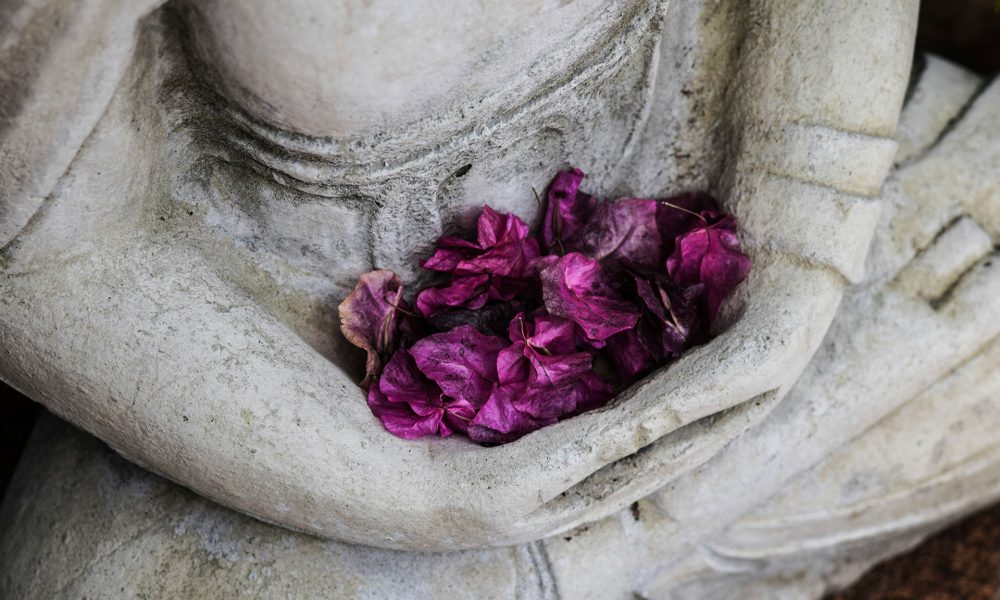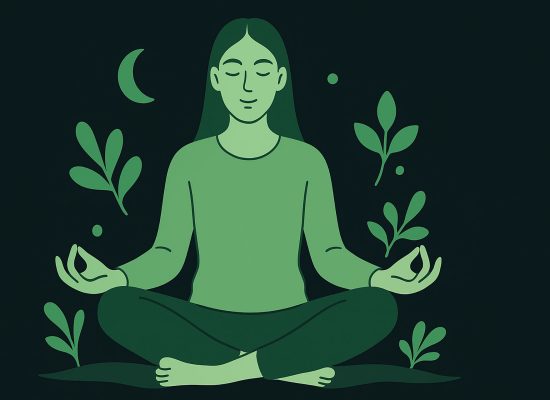In this article, we explore the history of meditation, from its ancient meditation origins to its evolution into modern practices. We’ll dive into how traditional meditation has adapted to meet the demands of contemporary lifestyles, offering tools for stress management, productivity, and well-being.
Table Of Content
Where Did Meditation Originally Come From?
Meditation is an ancient practice that dates back as early as 5,000 BCE. Meditation was spread along the Silk Road, an ancient network of trade routes connecting China, Central Asia, the Middle East, and Europe, facilitating not only the exchange of goods but also ideas and spiritual practices across continents. According to according to Psychology Today as it traveled, meditation took root in various spiritual traditions, including those of ancient Egypt, China, Judaism, Jainism, Sikhism, and Buddhism.
It originally began with the Vedas—Hindu scriptures that are part of the Sanatan Dharma way of life—and was further developed in different regions, such as Taoism in China and later within Buddhist traditions, deeply influencing the entire Indian subcontinent and shaping the evolution of meditation practices across the world. This rich meditation history highlights its role as a bridge between cultures, showing how ancient traditions have informed and shaped global practices over centuries.
Early meditation was often passed down orally in the form of poetry, making it easier to remember and share. This method of learning through spoken word is one of the reasons why guided meditation has become such a powerful and enduring tool in today’s practice. As we continue to explore meditation’s ancient roots, we uncover a rich tradition of teachings that span across cultures and centuries, offering us timeless wisdom for the modern world. The history of meditation reveals how this practice has been preserved and adapted, ensuring its relevance and accessibility across generations.

A Buddhist or Hindu Practice?
Meditation isn’t tied to any one religion—it’s simply a practice for anyone who seeks peace and clarity. Today, it’s also used as a tool for mental fitness, enhancing focus, productivity, and overall well-being. While meditation has deep roots in both Hinduism and Buddhism, it doesn’t belong exclusively to either; it’s a practice for the people. The history of meditation shows that in Hinduism, meditation is closely linked to self-realization and union with the divine, with practices like yoga and dhyana.
Yoga, defined here, is more than the physical practice that we may know it as in the West. It is derived from the Sanskrit word yuj meaning “to unite,” encompassing practices that harmonize body, mind, and spirit to include ethical principles, breath control, and meditation. Dhyana means “meditation” or “contemplation” and is a focused state of awareness that leads to self-realization and spiritual awakening in the yogic tradition. The origins of meditation in yogic practices emphasize its transformative power, illustrating how ancient techniques laid the foundation for modern approaches to mindfulness and self-discovery.
In Buddhism, meditation focuses on mindfulness and liberation from suffering, evolving into distinct methods such as Vipassana and Zen. Exploring the origins of meditation, we find figures like Patanjali in Hinduism, who authored the Yoga Sutras, and Buddha in Buddhism, who created a systematic approach to meditation as part of the Eightfold Path. Ultimately, meditation belongs to no one but offers its benefits to all. Traditional meditation practices, rooted in these ancient teachings, continue to provide a framework for mindfulness and self-awareness in contemporary life.
While meditation has deep roots in both Hinduism and Buddhism, it doesn’t belong exclusively to either; it’s a practice for the people.
The History of Meditation: How It Began and Evolved Over Time
Meditation’s history spans thousands of years, beginning in the Vedic period (1500–500 BCE), where it was first mentioned as a spiritual practice aimed at self-realization and connection with the divine, laying the groundwork for practices like yoga and dhyana. It evolved through Buddhist traditions (6th–4th century BCE), where figures like the Buddha systematized meditation as part of the Eightfold Path, focusing on mindfulness and awareness, which gave rise to techniques like Vipassana and Zen.

As it spread to China, Japan, and Southeast Asia, traditional meditation integrated with Taoism and Zen, with Taoist practices emphasizing harmony with nature and Zen focusing on direct experience and awakening. By the 20th century, modern meditation reached the West, popularized by figures like Swami Vivekananda and the Transcendental Meditation movement, which highlighted its mental and physical benefits, from stress reduction to creativity. Today, meditation continues to evolve, crossing cultural boundaries and remaining a powerful practice for well-being, reflecting the ongoing meditation evolution that connects ancient wisdom with contemporary needs.
How Meditation Transitioned from Ancient Traditions to Modern Practices
Did you listen to The Beatles growing up as one of your favorite artists? Did you know they were deeply inspired by meditation? For example, George Harrison’s song My Sweet Lord reflects his spiritual journey, with lyrics that express his longing for connection to a higher power. The song famously includes the chanting of “Hare Krishna,” a reference to the mantra Harrison embraced during his time studying meditation in India. This example highlights the meditation evolution, showcasing how ancient practices have influenced modern culture and music, connecting spiritual traditions with contemporary creativity.
This spiritual awakening continued with figures like Ram Dass and Timothy Leary from Harvard, who traveled to India, absorbed the teachings of meditation, and brought them back to the West. Ram Dass, in his book Be Here Now, helped popularize mindfulness, emphasizing the practice’s transformative power. These influential figures, along with global travel and cultural exchange, sparked a growing interest in meditation. In the 1970s, scientific studies began to explore meditation’s impact on mental health and stress reduction, which led to the development of programs like Mindfulness-Based Stress Reduction (MBSR) and meditation apps. Today, meditation continues to evolve from its ancient spiritual roots into a modern tool for well-being, influencing generations around the world.
Ultimately, meditation belongs to no one but offers its benefits to all.
The Earliest Meditation Research (and how it’s still true)
The scientific study of meditation gained momentum in the 1960s when Indian researcher B.K. Anand made a groundbreaking discovery. He found that yogis could enter such deep states of meditation that they didn’t react to intense stimuli, like hot test tubes being pressed against their arms. This study highlighted how profound meditation could influence the mind-body connection, showing its potential to help manage stress and enhance physical well-being. This research paved the way for modern meditation practices, which now integrate these ancient techniques with scientific understanding to address contemporary challenges like stress and mental health.
Building on this early research, Dr. Herbert Benson, a Harvard cardiologist, conducted his influential study in 1975. At Brigham and Women’s Faulkner Hospital, Dr. Benson explored how meditation could trigger the “relaxation response,” counteracting the body’s stress-induced physiological changes, such as increased heart rate and blood pressure. His work demonstrated that meditation could help people achieve a state of calm and relaxation, offering a powerful tool for managing stress and improving overall health.
Both of these pioneering studies remain highly relevant today, as modern research continues to confirm meditation’s significant role in promoting mental and physical well-being. The foundational work done in the ’60s and ’70s continues to shape our understanding of meditation’s health benefits. Meditation history demonstrates how these early scientific explorations built upon ancient wisdom, bridging the gap between tradition and modern science to reveal the enduring impact of meditation on human health.
What Can We Learn from the History of Meditation?
The history of meditation reveals its universal appeal, transcending cultures and religions throughout the ages. Its origins in ancient meditation practices highlight humanity’s enduring search for peace, self-awareness, and purpose. As meditation evolved over time, it adapted to fit the needs of different cultures, showing how traditional meditation wisdom remains relevant in modern meditation practices today. The evolution of meditation underscores its ability to address contemporary challenges, offering timeless tools for mental clarity and emotional well-being.

How Meditation Has Adapted to Modern Lifestyles: Download Siddha Meditate to Begin Your Modern Meditation Journey
The history of meditation demonstrates its remarkable ability to evolve and meet the needs of modern lifestyles. Today, simplified practices like box breathing or affirmations make meditation accessible, even in our busiest moments. Meditation has seamlessly integrated with technology through apps, online classes, and wearable devices, allowing for convenient practice anywhere.
Modern meditation focuses not only on spiritual growth but can now be used as a tool to manage stress, boost productivity, and support physical health. With Siddha Meditate, you can begin your meditation journey with ease and keep yourself accountable by scheduling out your meditations with our calendar integration feature. Try a simple practice like Breath Relaxation to center your mind and relieve stress—perfect for enhancing your daily routine. Start today by downloading Siddha Meditate and discover how ancient meditation wisdom can support your modern life.
FAQ about Meditation History
1. What is the history of meditation?
Meditation’s history dates back to as early as 5,000 BCE. It began with ancient traditions, particularly in the Vedic culture of India, where it was practiced for spiritual growth and self-realization. Over time, meditation spread along the Silk Road, taking root in spiritual traditions like Buddhism, Taoism, and Hinduism. In modern times, meditation has evolved into a tool for mental well-being and stress management, connecting ancient meditation practices with contemporary needs. This ongoing meditation history showcases its ability to adapt and remain relevant across centuries.
2. Where did meditation originate?
Meditation originated in ancient India, rooted in the Vedic scriptures that form part of the Sanatan Dharma tradition. These early practices emphasized self-realization and connection with the divine. As meditation spread globally, it influenced many spiritual traditions, including Buddhism, where mindfulness and liberation from suffering became central, and Taoism, which emphasized harmony with nature. The origins of meditation highlight its profound impact on cultures worldwide.
3. How has meditation evolved over time?
Meditation has evolved significantly over millennia. Starting as a spiritual practice in ancient India, it spread to regions like China and Japan, merging with traditions like Taoism and Zen. By the 20th century, modern meditation gained prominence in the West, with figures like Swami Vivekananda introducing these practices, and scientific research validating their benefits for stress reduction and mental clarity. This meditation evolution reflects its journey from traditional spiritual roots to modern wellness practices.
4. What are examples of traditional meditation practices?
Traditional meditation practices have deep roots in spiritual and cultural traditions. In Hinduism, Dhyana involves focused contemplation and is part of yoga. Buddhism offers Vipassana, emphasizing mindfulness and insight, and Zen, which focuses on awakening through direct experience. Early meditation practices were also transmitted orally, often as poetry, making them accessible and memorable. Traditional meditation practices provide a timeless framework for mindfulness and self-awareness.
5. Is meditation a Buddhist or Hindu practice?
Meditation is not exclusive to either Buddhism or Hinduism—it transcends individual religions and is a practice for anyone seeking clarity and well-being. Its roots are deeply intertwined with both traditions. In Hinduism, meditation is closely linked to self-realization and union with the divine, as seen in practices like yoga and Dhyana. In Buddhism, meditation focuses on mindfulness and liberation from suffering, with methods like Vipassana and Zen. Meditation history shows that while it originated within these spiritual traditions, it has evolved into a universal tool that benefits people of all backgrounds.







